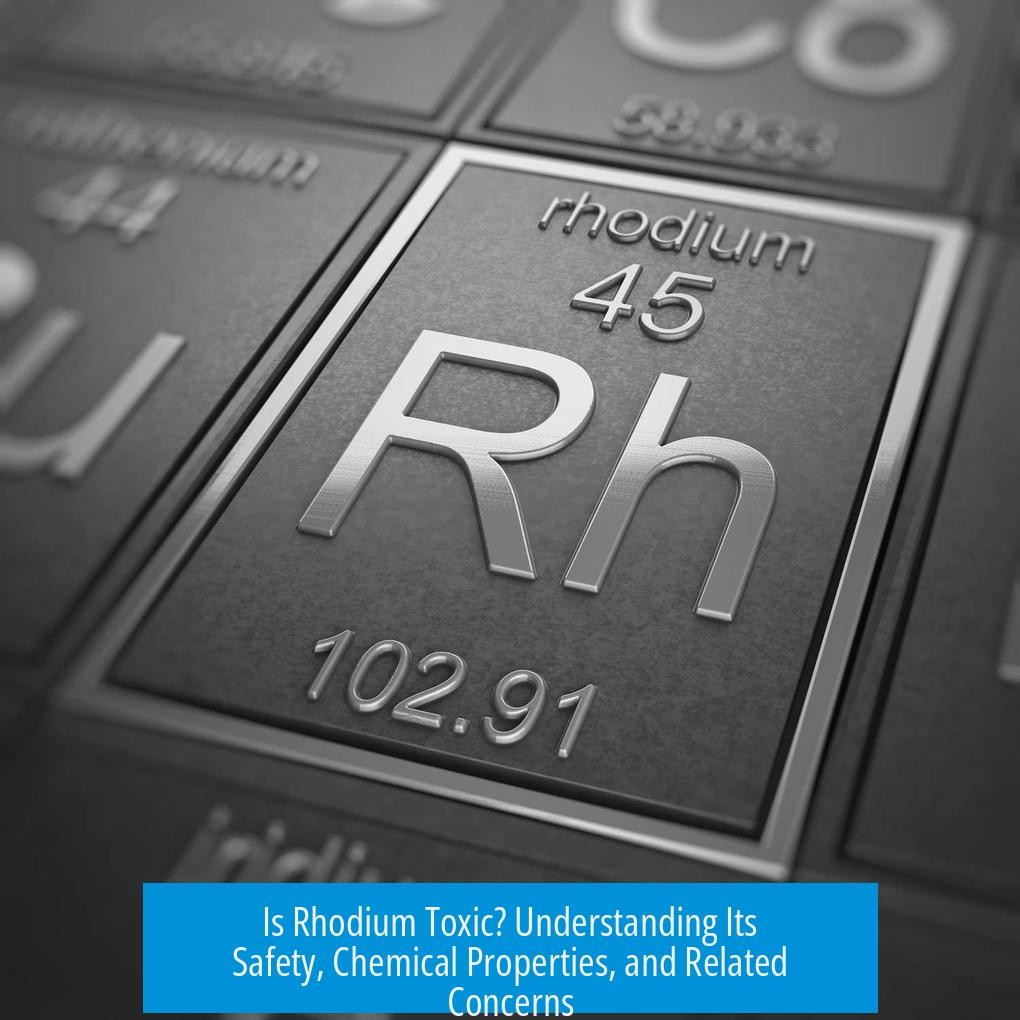Is Rhodium Toxic?
Rhodium is generally considered non-toxic due to its chemical inertness and stability under typical conditions. It rarely reacts chemically and remains stable in common environments, such as jewelry plating and dental applications.
Chemical Stability and Reactivity
Rhodium resists chemical reactions under most conditions. It does not release harmful substances easily because it is inert. This minimal reactivity decreases its potential toxicity. Rhodium plating is used precisely because it does not degrade or react with skin or bodily fluids.
Durability and Safety in Applications
Rhodium plating survives exposure to harsher environments than those found inside the human body. It is used on spark plug electrodes, which endure high heat and corrosion. If rhodium is safe in such conditions, it is unlikely to pose toxicity risks in oral or skin contact applications.
Concerns About Direct Contact
Despite its chemical stability, some individuals express caution regarding rhodium contact in jewelry or oral use. This concern is based on personal preference rather than documented toxicity. There is limited evidence of adverse health effects from rhodium exposure via skin or mouth. However, people sensitive to metals may exercise caution.
Confusion with Related Metals
Rhodium is often confused with elements like ruthenium, which have similar names but distinct chemical properties. Toxicity profiles can vary among these metals. Therefore, conclusions about rhodium must rely on data specific to rhodium, not related elements.
Summary of Key Points
- Rhodium is chemically inert and stable, lowering its toxicity risk.
- It withstands harsh conditions, indicating safety in common uses like plating.
- There is no strong evidence of toxicity from skin or oral contact.
- Personal caution exists but is not based on chemical data.
- Do not confuse rhodium’s toxicity with that of similar elements.
Is rhodium toxic when used in jewelry or plating?
Rhodium is very stable and does not react easily. This means it is generally not toxic when used in plating or jewelry. It remains safe under normal conditions.
Can rhodium plating release harmful substances in the mouth?
Rhodium plating is durable and can withstand conditions harsher than those in the mouth. It is unlikely to release toxic substances during everyday use.
Are there any safety concerns about rhodium touching skin or being in the mouth?
Some people prefer to avoid rhodium in contact with skin or oral areas. This caution may reflect personal concerns rather than clear evidence of toxicity.
Is rhodium the same as ruthenium, and do they share toxicity levels?
Rhodium and ruthenium are different metals with similar names. Their chemical properties and toxicity levels can differ, so one should not assume rhodium’s safety based on data about ruthenium.
Why is rhodium plating used on items like spark plugs?
Because rhodium is chemically inert and durable, it can handle harsh environments without breaking down or releasing toxins. This durability translates to safety in less extreme uses too.





Leave a Comment